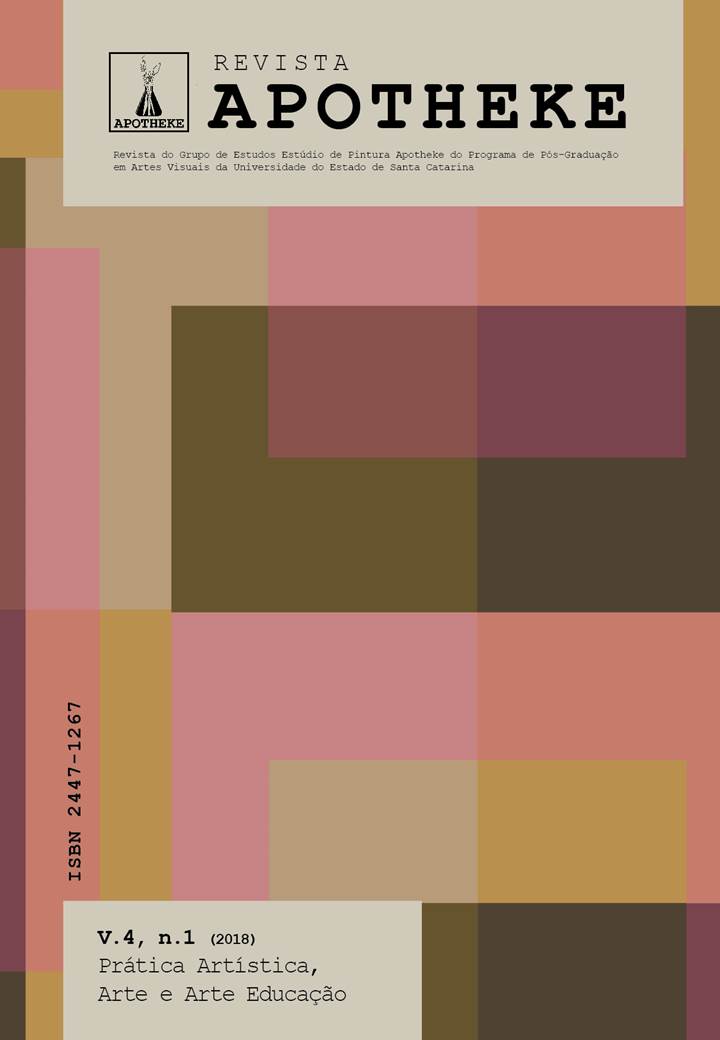Corpo e (des) fragmentação do discurso
DOI:
https://doi.org/10.5965/24471267412018033Keywords:
body, art, womanAbstract
This article discusses the matters related to the body and to the discourse (de)fragmentation since the readings of the texts “The mortification of the body in if this is a man? By Primo Levi” and “Surrealism, myth and psychoanalysis”. Through the concepts of simulacrum, fetish, the gradiva mith, the idea of woman as muse and artist, carries out problematizations such as showing that the body and especially the female body in the field of art and life was/is violated in various ways; and that the debate about this space is
necessary for the construction/deconstruction of the imaginary and speeches in the social and artistic spheres, this is, it is necessary to break up with the production of signs and consequently with phallocentric subjectivities, racist and Eurocentric, over artistic maneuvers and articulations thinking of the woman's body as a producer of the social body.
Downloads
References
FELIX, José Carlos; SALVADORI, Juliana Cristina. A mortificação do corpo em é isto um homem? De Primo Levi. Ilha do Desterro v. 68, nº 3, p. 043-053, Florianópolis, set/dez 2015. Disponível em:
<https://periodicos.ufsc.br/index.php/desterro/article/view/2175- 8026.2015v68n3p43 >. Acesso em: 18 jun. 2017.
FER, Briony. Surrealismo, Mito e psicanálise. In: Arte Moderna Práticas e Debates, São Paulo, Cosac & Naify, 1998. Disponível em: <https://www.passeidireto.com/arquivo/2571136/fer-briony---surrealismo- mito-e-psicanalise-in-a-arte-no-entre-guerras---lit-fr>. Acesso em: 21 abr. 2017.
FRAGA, Ana Maria da Silva. Escombros processos poéticos em performance- instalação. Salvador, Bahia, 2014.
Downloads
Published
How to Cite
Issue
Section
License
Copyright (c) 2018 REVISTA APOTHEKE

This work is licensed under a Creative Commons Attribution-NonCommercial 4.0 International License.
Copyright and Licensing Policy
Authors of works submitted to Revista APOTHEKE authorize their publication in both print and digital formats exclusively for academic purposes. Reproduction is permitted, provided that the source is properly cited. Authors confirm the originality, authorship, and unpublished status of their manuscripts.
Articles published by the journal are freely available and intended for academic and non-commercial use only. All copyrights are transferred to the journal. The content of signed articles reflects the views of their respective authors and not the official position of Revista Apotheke. The author(s) agree to always cite the following reference when republishing or referring to the content originally published in Revista Apotheke:
“This article was originally published by Revista Apotheke in volume (insert volume), number (insert number), year (insert year), and is available at: http://www.revistas.udesc.br/index.php/APOTHEKE/index”
It is the sole responsibility of the authors to obtain written permission for the use of any material protected by copyright law included in their articles. Revista Apotheke is not responsible for copyright infringements committed by contributors.
Authors retain copyright and grant the journal the right of first publication, with the work licensed under a Creative Commons Attribution-NonCommercial License (CC BY-NC):
-
Attribution (BY): Licensees are allowed to copy, distribute, display, perform, and create derivative works, provided that proper credit is given to the author or licensor, in the manner specified.
-
NonCommercial (NC): Licensees may use the material only for non-commercial purposes.
After publication, authors retain the rights to their work and may republish the text.




